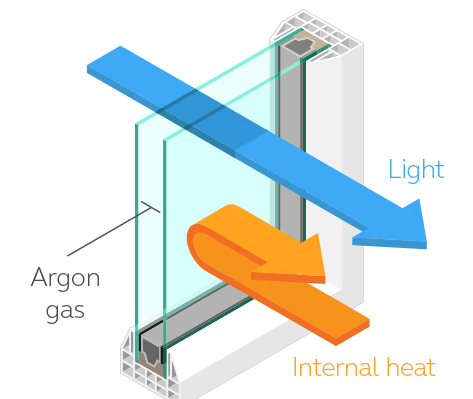The Science Behind Double Glazing

In the last century, one innovation has changed architecture and home building more than almost any other: double glazing.
Double glazing has historical roots in 19th-Century Scotland, where builders used two panes of glass (called a storm sash) for insulation. The trouble is air is a great heat conductor.
Early windows that sandwiched regular air between two glass panes were sucking warm air out in winter and letting in heat during summer. As a result, the insulation benefits were negligible, and condensation remained a problem.
Along comes C.D. Haven
In 1934, Charles D Haven filed a patent that described an envelope of dried air between two panes of glass.
The technology went by many other names before it was called “double glazing”:
Thermopane™
Twindow®
Insulated glass
Storm sash
After C.D. Haven introduced his revolutionary Thermopane™ in 1934, skyscrapers with larger windows appeared. Sliding glass doors became features in modern homes.
Offices, stores, houses and Antarctic research labs* could all control internal temperatures while letting in abundant sunlight like never before.
Double glazing changed everything.
What makes double glazing so innovative?
“Double glazing” does not simply mean “two glass panes”.
Unlike historical storm sash windows, modern double glazing is an incredibly effective insulator for heat and sound.
Double glazing consists of three layers:
1. Exterior glass layer
2. “Air gap”, usually dried air or Argon gas
3. Internal glass layer
A spacer between the glass layers contains a desiccant to prevent condensation.
The air gap in double glazing separates two temperature zones (inside and outside). The air or Argon gas envelope slows down heat transfer dramatically.
Cold air cannot travel between the panes, and heat cannot pass through in either direction. That means a reduction in heating and cooling requirements up to 50%, cutting energy bills all year round.
Double glazing has the same effect on noise. The air gap slows sound waves, reducing noise by up to 70%, making your home up to 8 times quieter.
Modern innovations in double glazing
Aside from the glass and air gap, ARCO Double Glazing customises our double glazing with a range of innovations:
More robust uPVC frames
Steel reinforcement for security
Low-E glass to reduce UV rays by 75%
Multi-point locking system
Custom sizing
Plus, we offer a range of glazing, including two types of toughened glass for security, privacy coatings, and toned panes.
What do penguins have to do with double glazing?
In 1939, the Byrd research expedition to Antarctica featured heavily in American newspapers. The articles all fixated on one design feature that allowed researchers to study penguins in their natural habitat: double glazing.
Double glazing wouldn’t become popular in Australia for nearly half a century. Maybe it would have been a different story if penguins were roaming the streets.
Double glazing in 2022
Today, double glazing is a fixture in contemporary design across the world. Double glazed windows with innovative uPVC frames limit thermal transfer, reduce sound and keep your premises secure.
Browse our double glazed windows and double glazed doors to see just how far this incredible insulating technology has come in the last century.
Get a free online quote
Use our simple online calculator to receive an instant estimation for your project. Please note the instant estimate is for white frames and doesn't include installation or accessories. Prices are subject to change.